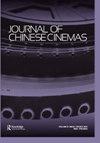Colour glass ceiling: The life and death of Taiwanese-language cinema
IF 0.4
3区 艺术学
0 FILM, RADIO, TELEVISION
引用次数: 0
Abstract
Abstract Why are there less than ten colour films out of 1,200 Taiwanese-language films (taiyupian)? In the late 1950s, the market for Taiwanese-language cinema was much larger than the market for Mandarin-language cinema. So, why did Taiwanese-language cinema not break into colour? How did Mandarin-language colour feature films suddenly become the mainstream of film production after 1967? With archival research and interviews, this essay argues that the émigré KMT Nationalist regime systematically promoted the production of Mandarin-language colour films and suppressed the Taiwanese-language cinema. This produced a ‘colour glass ceiling’ – a seemingly invisible barrier hindering the advancement to colour film – for Taiwanese-language cinema. Consequently, Taiwanese-language cinema suddenly died out in the 1970s due to the lack of black-and-white film stock. The essay argues that this knowledge of the unfair power imbalance between Taiwanese-language and Mandarin-language cinema changes our understanding of Taiwan film history, by highlighting not only the political economy of the technical transition to colour but also the importance of raw film stock in explaining the vicissitudes of Taiwanese-language cinema.彩色玻璃天花板:台语电影的生与死
摘要为什么一千二百部台语片中,彩色片不到十部?1950年代末,台语电影的市场比国语电影的市场大得多。那么,为什么台语电影没有彩色化呢?1967年后,国语彩色故事片是如何突然成为电影制作的主流的?通过档案研究和访谈,本文认为,国民党政权有系统地推动了国语彩色电影的制作,压制了台语电影。这为台语电影制造了一个“彩色玻璃天花板”——一个似乎看不见的阻碍彩色电影发展的障碍。因此,台语电影在1970年代因黑白电影库存不足而突然消亡。本文认为,这种对台国语电影与曼国语电影之间不公平权力失衡的认识改变了我们对台湾电影史的理解,不仅突出了色彩技术转型的政治经济,而且突出了原始电影存量在解释台国语电影变迁中的重要性。
本文章由计算机程序翻译,如有差异,请以英文原文为准。
求助全文
约1分钟内获得全文
求助全文

 求助内容:
求助内容: 应助结果提醒方式:
应助结果提醒方式:


